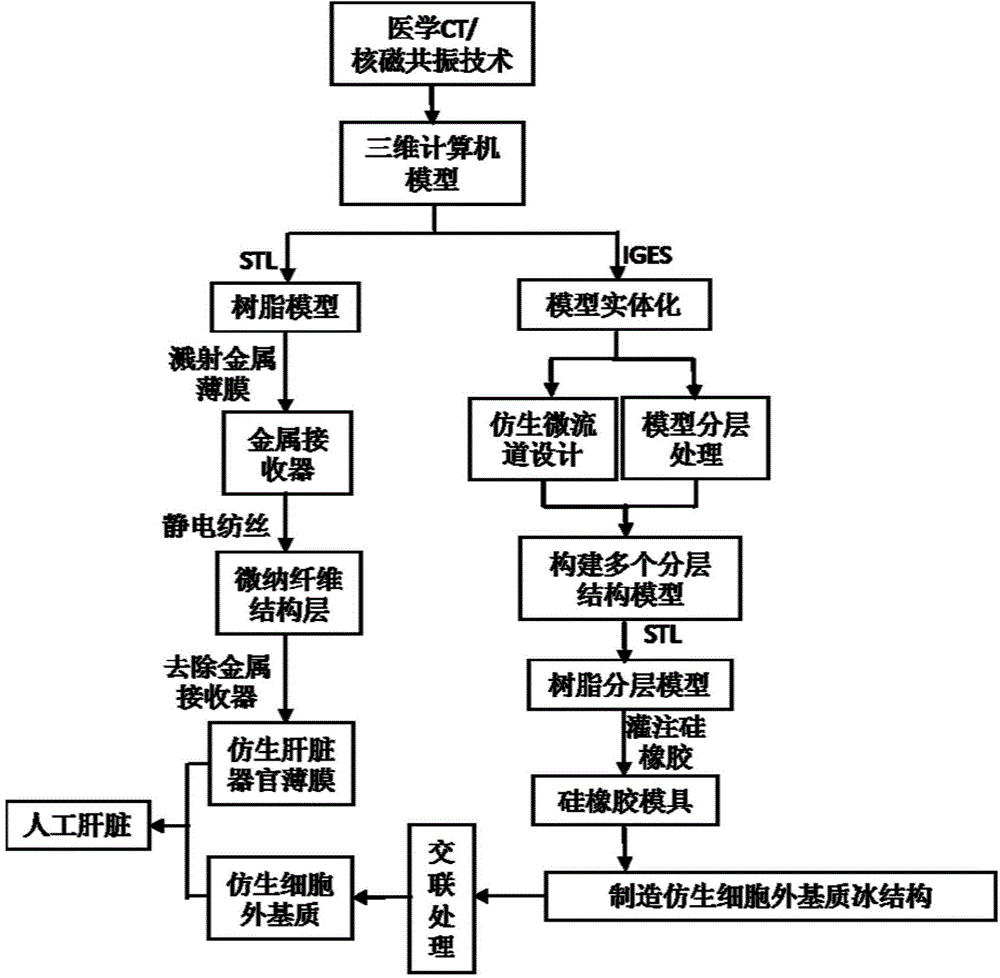Bionic construction method of artificial organics
An artificial organ and layered structure technology, which is applied in the field of bionic construction of artificial organs, can solve the problems of difficulty in building structures, inability to realize bionic shape of organs, and complexity, and achieve the effect of being beneficial to transplantation, maintaining similarity, and ensuring molding.
- Summary
- Abstract
- Description
- Claims
- Application Information
AI Technical Summary
Problems solved by technology
Method used
Image
Examples
Embodiment Construction
[0017] The present invention will be described in detail below in conjunction with drawings and embodiments.
[0018] Take building an artificial liver as an example.
[0019] A method for constructing an artificial liver, comprising the following steps:
[0020] 1) Using medical CT and MRI techniques to reconstruct the three-dimensional computer model of the macroscopic shape of the artificial liver;
[0021] 2) Export the reconstructed 3D computer model in step 1) in STL format, use 3D printing technology to prepare a resin model similar in shape to the natural liver, sputter a layer of metal film evenly on the surface of the resin model as a receiver, and then use Electrospinning technology evenly deposits a layer of micro-nano fiber structure layer with a thickness of 50-500 microns on the surface of the metal film, and then removes the resin model to obtain the artificial liver film. The material used for the micro-nano fiber structure layer is polylactic acid-hydroxyl ...
PUM
| Property | Measurement | Unit |
|---|---|---|
| Thickness | aaaaa | aaaaa |
Abstract
Description
Claims
Application Information
 Login to View More
Login to View More - R&D
- Intellectual Property
- Life Sciences
- Materials
- Tech Scout
- Unparalleled Data Quality
- Higher Quality Content
- 60% Fewer Hallucinations
Browse by: Latest US Patents, China's latest patents, Technical Efficacy Thesaurus, Application Domain, Technology Topic, Popular Technical Reports.
© 2025 PatSnap. All rights reserved.Legal|Privacy policy|Modern Slavery Act Transparency Statement|Sitemap|About US| Contact US: help@patsnap.com

